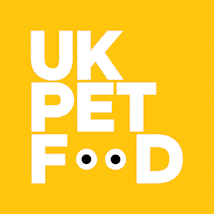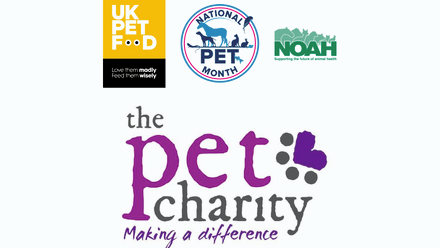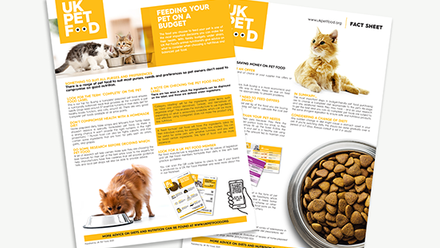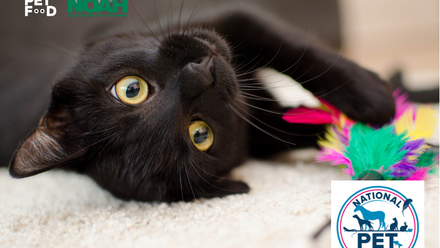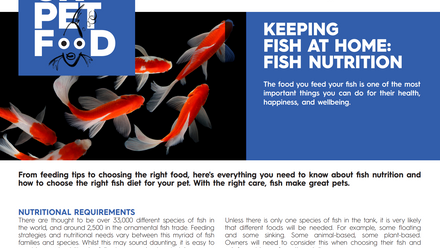Feeding Your Pet on a Budget
There is a range of pet food to suit most purses, needs and preferences so pet owners don’t need to compromise on good nutrition.
Look for the term complete on the pet food label
This is our top tip. Buying a ‘complete’ prepared pet food ensures a nutritionally balanced meal that provides all the nutrients a pet needs. Dogs need around 37 essential nutrients in their daily diet for healthy bodily function, and cats, around 40. There are very good ‘complete’ pet foods available at all price points.
Don't compromise health with a homemade diet
Home prepared diets, table scraps and leftovers from family meals shouldn’t replace a specially formulated pet food, as there is a strong chance it won’t provide the right nutrients in the right proportions.1 2 Human food can also be highly calorific and may contain some ingredients that are toxic for pets such as onion, garlic, and grapes.
Do some research before deciding which pet food
A bit of research will help owners make sure they are choosing the best formula for their pet at the best price. Look to the experts for help. Manufacturers have free carelines that will provide guidance. Vets and local pet shops will also be able to provide advice.
A note on checking the pet food packet label
There are two ways in which the ingredients can be displayed on the label, and these are defined under regulations.
‘Category labelling’ will list the ingredients under terms such as ‘meat and animal derivatives’, ‘cereals’, and ‘derivatives of vegetable origin’. This enables the manufacturer to use ingredients depending on what is seasonably available, which can be more cost effective. Using ‘categories’ does not make the product any less nutritious.
A ‘fixed formula’ pet food will have the ingredients listed by their individual names, for example, lamb, rice, chicken. This can be useful for some pets with sensitive tummies, and you wish to avoid certain ingredients. This type of food can be more expensive.
Look for a UK Pet Food Member
Pet food manufacture is regulated by over 50 pieces of legislation and UK Pet Food members formulate their diets in line with best practice guidelines.
You can scan the QR code on our factsheet to see if your brand is produced by a UK Pet Food Member and read more about this in our factsheet.
Top Tips for saving money on pet food
1.Hunt down an offer
Check if your brand of choice or your supplier has offers or loyalty discounts.
2. Buy bigger
If you have the space, bulk buying is a more economical and environmentally friendly way to shop. Keep an eye on ‘best before’ dates and store appropriately to prevent problems.
3. How much you need to feed differs from brand to brand
Don’t just look at the cost per kg of the food you are buying. Work out how long the bag will last to calculate the cost per day of feeding that food.
4. Don’t feed more than your pet needs
Many owners overfeed their pets because they think the manufacturer’s recommended portion looks too small, or they don’t read the label and simply fill up the bowl. Follow the feeding guidelines and check your pet is a healthy size using the Pet-Size-O-Meter adjusting the amount fed to maintain your pet at a healthy body condition.
In Crisis
For pet owners in crisis, there is some support in the form of pet food banks. UK Pet Food has worked alongside FareShare, which coordinates the distribution of pet food to those in need. Some member companies have also signed up this scheme or other local schemes. You can also locate your nearest food bank on the RSPCA website and Blue Cross website – among others.
In summary…
The most important steps in budget-friendly pet food purchasing are to choose a ‘complete’ diet appropriate to the pet’s life-stage and any additional needs they may have - and do your research to get the best deal you can. All ‘complete’ pet foods are subject to the same stringent legislation to ensure safe and nutritious products.
Considering a change of diet?
Any sudden change in diet might cause a stomach upset in your pet. If you’re switching diets, this should be done gradually over a period of 4-7 days. Always consult a vet if in doubt.
References:
- Roudebush P, Cowell CS. Results of a hypoallergenic diet survey of veterinarians in North America with a nutritional evaluation of homemade diet prescriptions. Vet Dermatol 1992;3:23-28.
- Stockman J, Fascetti AJ, Kass PH, Larsen JA. Evaluation of recipes of home-prepared maintenance diets for dogs. JAVMA 2013;242:1500-1505.
